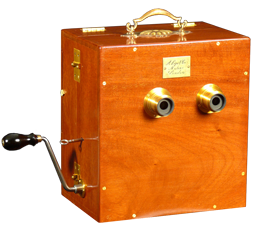
Click here to read about the inventor
|

In 1890, Frederick Varley patented a sequence camera for stereoscopic images. Friese-Greene demonstrated this camera and in 1893 patented his own version, which was almost identical. A replica of this camera is featured in several scenes and publicity shots for the feature film biography The Magic Box (1951), in which actor Robert Donat played Willie Friese-Greene, establishing it as one of the icons of early cinema. An initial test of the replica indicates that it works well, albeit at a low frame rate (as expected), and the resulting images can be viewed stereoscopically to good effect. Despite the famous scene in The Magic Box which has Friese-Greene using the mechanism as a projector to the amazement of a watching policeman (Laurence Olivier), there is no workable provision for successful motion picture projection. The frame rate is too low, unperforated film would not have registered sufficiently well, and the flicker would have made the result completely unwatchable. But we shall, nevertheless, make an attempt to project with the camera, just to confirm our conclusions. |

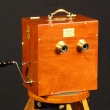
Replica camera
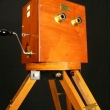
Replica camera on replica tripod
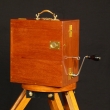
Replica camera, rear view
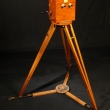
Replica camera on replica tripod
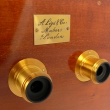
Replica camera lenses
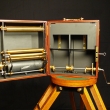
Replica camera, opened
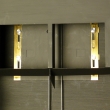
Replica camera, stereo film gate
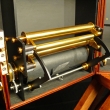
Replica camera mechanism
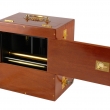
Replica camera, sliding panel
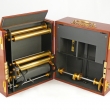
Replica camera, opened
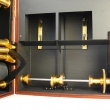
Replica camera, stereo film gate
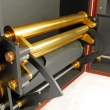
Replica camera film roller mechanism
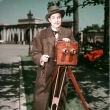
A non working replica camera featured in the film, "The Magic Box". 1951
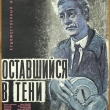
Russian film poster for the film, "The Magic Box"
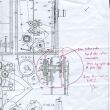
Patent document
|